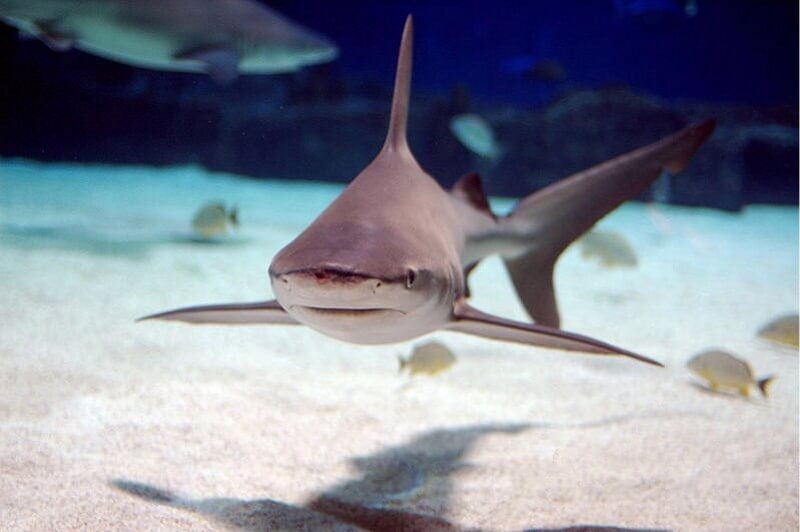Let’s Talk About It…Sandbar Shark
The Sandbar Shark is found in temperate and tropical waters, from the Western Atlantic, between Massachusetts and southern Brazil; in the eastern Atlantic from Portugal to Zaire; and in the Indo-Pacific from South Africa, our very own False Bay and KZN to the Galapagos and from Vietnam to New Caledonia. Also occurring in the Red Sea and Mediterranean, this shark is gorgeous. Not taking anything away from the others, but this little guy is just a stocky, solid shark, makes me think of a Staffie.

The Sandbar shark has cat-like eyes and a lovely smile.
He gets his name from being blue-greyish brown in colour with a paler underside, as with most sharks. He grows to a maximum of 2.4 meters (240 centimetres or 94 inches) and has a large dorsal fin for its body! He has almost cat-like eyes, and a lovely smile. His skin is thick and tough, which sadly makes it a wanted commodity in the leather industry, as well as its meat being used for human consumption and its fins for shark fin soup. This little guy was fished uncontrollably up until 1993, when the US placed restrictions on size, but still it is considered vulnerable! And will take many decades before it is no longer at threat of being made extinct!
The Sandbar Shark is classified as Vulnerable (VU) on the IUCN Red List, can we do something to change this?

The Sandbar Sharks’ nursery areas are filled with nutrients for the growth of the juvenile sharks.
The female Sandbar Shark gives birth to a litter of pups, varying in numbers between 1 and 14 pups, according to her size, the bigger she is the more pups she has. After a gestation period of between 8 to 12 months, she will move into shallow coastal areas to give birth, and then she will leave these nursery areas to return to their preferred 20 to 60 meters depth, near the oceans bottom. The juvenile Sandbar Sharks will remain in these nutrient filled nursery areas until winter, when they too will move out to the oceans depths.

The sexual maturity of a Sandbar Shark is between 12 and 15 years, adding to conservation concerns.
Females only give birth every second year at most, so the sharks slow growth and rate of sexual maturity, is a concern within its conservation status. Only reaching sexual maturity at between 12 and 15 years, and then reproducing between 1 and 14 pups every 2 to 4 years, it’s not possible for them to stay ahead of the fishing industry.
Though they have sharp triangular teeth, these sharks are not a threat to humans at all, enjoying a diet of small bottom feeding fish, crustaceans and molluscs, while the juveniles feast on blue crab.

Come and see Great Whites in their natural environment, as they fly through the air and develop a love for these and other fantastic sea creatures, within the waters of False Bay and the world!
Till we meet again, keep that toothy grin!

By Nadine Bentley





